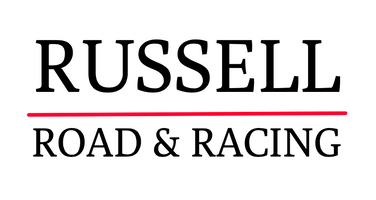
Buying Advice | How to understand alloy wheel sizing
Are you looking to improve the look of your car. New alloy rims are perhaps one of the most noticeable changes you can make to your car! Whether you are looking to increase the size or just achieve a more stylish look we have a range of wheels to suit.
"Will this wheel fit my car?" has to be one of the most asked questions and even then you can find mixed answers. We have tried to make your search as simple as possible by categorising alloy wheels with filter choices for make and model however if you know what you are looking for we have given you the ability to search for a specific fitment. Today we will give a brief explanation of the sizing!
Rim Size
The size of the rim is the diameter. It is always stated in inches and excludes the size of the tyre. The tyre will tell you the size of your wheel as shown in the image below. If you fit wheels that are too large for your car you might find the tyre rubbing on the arch lining which will cause unnecessary wear and stress on the suspension components.

Rim Width
The width of the rim is again always stated in inches. But to make things extra difficult to understand we include a J on the end, 8J = 8 inches. The width of the wheel dictates what size tyre will fit. Obviously the wider the wheel the wider tyre you can fit. Again it is important to check the suitability of your car for wider wheels either on a model specific forum or using an online fitment calculator because if a wheel is too wide it may clash with the suspension strut or brake caliper. This can be resolved by the use of wheel spacers! If you require wheel spacers please contact us for individual deals.
Offset
Offset is often referred to as ET taken from the German word "Einpresstiefe" translating to insertion depth in English. Offset I would say is the least understood of the measurements however it is very important! Offset is the amount the wheel projects from the hub. Confusingly this measurement is discussed in mm whereas previously we have been looking at inches.
- Negative Offset - Mounting face is inboard from the centre of the wheel.
- Zero Offset - Mounting face is inline with the centre of the wheel.
- Positive Offset - Mount face is outboard from the centre of the wheel.
Bolt Fitment - PCD
This is a fairly straightforward part of choosing the correct alloys for your car. Typically you will find that a manufacturer tends to use the same bolt pattern across their range of models. BMW typically use a 5/120 pattern. 5 represents the number of bolts that secure in the hub. 120 is the PCD, this is the circumference of a circle which intersects with the centres of the bolt pattern. You do not have a choice when it comes to bolt fitment & PCD unless you are changing the wheel hubs so ensure you have selected the correct choice before proceeding to check out!

We hope you have find the guide useful. If you require any further information or have any questions please contact us.
Click here to shop our range of allow wheels now!
Please comment if you have any requests or particular subjects you would like us to look at in the future.

Comments
Leave a comment